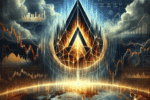As astronomers trained the gaze of the Euclid space telescope to a distant region of the Milky Way, they made a remarkable discovery – dozens of rogue planets drifting freely from their parent stars. These wandering worlds were not just any planets; they were nestled deep inside the Orion nebula, a massive cloud of dust and gas located 1,500 light years away. This groundbreaking revelation marks the first scientific findings unveiled by researchers on the Euclid mission, a €1 billion observatory launched by the European Space Agency (ESA) last summer on a six-year quest to map the cosmos in 3D.
The Euclid telescope’s initial 24-hour observations yielded a wealth of information, unveiling a staggering 11 million objects in visible light and 5 million in infrared. Among these discoveries were not only the rogue planets but also new star clusters, dwarf galaxies, and ancient galaxies dating back to the universe’s first billion years. These findings offer a glimpse into the mysterious 95% of the universe that remains unexplained, dominated by dark matter – an invisible cosmic substance that binds galaxies together, and dark energy, which propels the universe’s expansion.
Scientists are particularly excited about the stunning images captured by Euclid, showcasing celestial marvels like the NGC 6744 spiral galaxy and the Dorado group of galaxies. These wide-field views provide unprecedented detail about the structures and formations within these cosmic marvels. Prof. Mark Cropper from UCL, leading Euclid’s VIS camera team, expressed his amazement at the images, emphasizing that they are not just aesthetically pleasing but also brimming with invaluable scientific insights.
The newly released images also shed light on colossal galaxy clusters like Abell 2390, housing over 50,000 Milky Way-like galaxies, and Abell 2764, where galaxies orbit within halos of dark matter. Additionally, the discovery of rogue planets – giant youngsters drifting aimlessly through the galaxy – opens a window into planet formation mechanisms, prompting astronomers to delve deeper into understanding these cosmic nomads’ origins and trajectories.
By studying these rogue planets and other cosmic phenomena on a vast scale, astronomers hope to unravel the mysteries of our universe’s evolution and gain vital insights into the forces shaping our galactic neighborhood. As researchers delve further into Euclid’s observations, they anticipate uncovering a trove of additional planets and unveiling even more secrets about the universe’s enigmatic nature. These groundbreaking discoveries mark just the beginning of what promises to be an exciting era of exploration and discovery in the field of astronomy.










